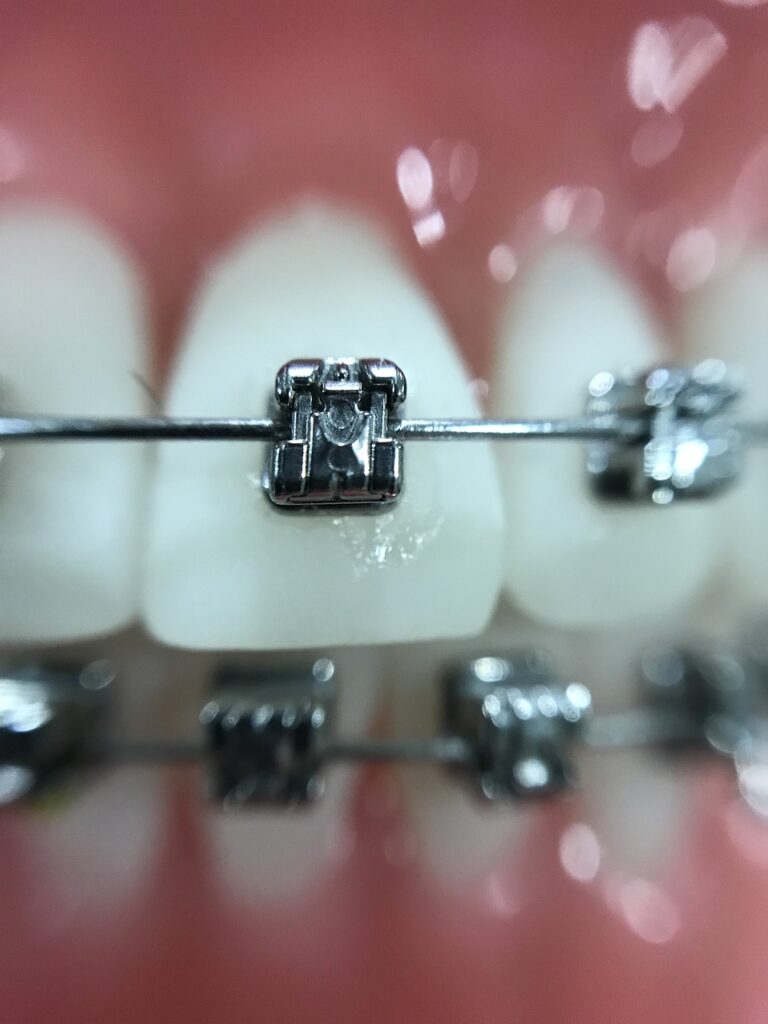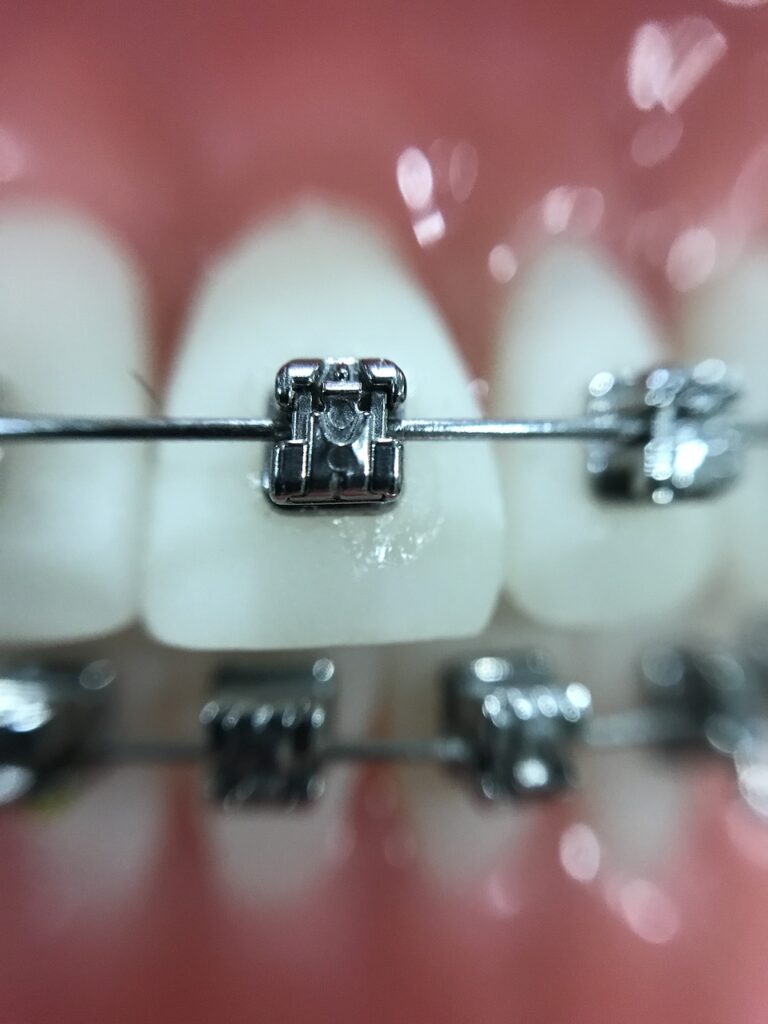Dental braces are a common solution for correcting crowded or crooked teeth and misaligned jaws. While they are most commonly used during adolescence, more and more adults are also turning to braces to improve their dental health and appearance. Braces consist of metal or ceramic brackets, wires, and bonding material, and there are different types available, including traditional metal braces, clear ceramic braces, lingual braces, and invisible aligner trays. By exerting continuous pressure on the teeth, braces gradually shift them into the desired position. Although getting braces is generally not painful, you may experience some soreness after the initial placement and adjustments. The success of treatment with braces hinges on your ability to follow your orthodontist’s instructions. While braces for children are often covered by insurance, adult braces are usually not covered, and the cost can range from $5,000 to $7,000. The treatment time with braces can vary but typically lasts one to three years. Regardless of age, maintaining proper oral hygiene and regular visits to the orthodontist are essential for optimal results. After completing treatment with traditional braces, retainers are used to maintain the teeth’s new position. Whether you’re a teenager or an adult, it’s worth considering braces to improve both your oral health and appearance.

Types of Dental Braces
Traditional metal braces
Traditional metal braces are the most commonly used type of braces. They consist of metal brackets, wires, and bonding material. The brackets are attached to the teeth using a special adhesive, and the wires are then threaded through the brackets. Metal braces are highly effective in correcting a wide range of orthodontic issues and are typically the most affordable option.
Clear ceramic braces
Clear ceramic braces offer a more discreet alternative to traditional metal braces. They are made of tooth-colored ceramic material that blends in with the natural color of your teeth. This makes them less noticeable, especially from a distance. Clear ceramic braces are a popular choice among adults and teenagers who want a less noticeable option but still require the benefits of traditional braces.
Lingual braces
Lingual braces are similar to traditional metal braces but with a twist. Instead of being placed on the front of the teeth, the brackets and wires are placed on the back of the teeth, making them virtually invisible from the front. This makes lingual braces a great option for those who want a discreet treatment option but prefer not to use clear aligners. It’s important to note that lingual braces may take some time to get used to due to their placement on the back of the teeth.
Invisible aligner trays
Invisible aligner trays, such as Invisalign, are a revolutionary alternative to traditional braces. These trays are made of clear plastic and are custom-made to fit over your teeth. They are removable, meaning you can take them out to eat, brush your teeth, and for special occasions. Invisible aligners gradually shift your teeth into the desired position over time. They are a popular choice for those who want a nearly invisible treatment option and the flexibility to remove their braces when needed.
How Dental Braces Work
Dental braces work by exerting constant pressure on the teeth, gradually moving them into the desired position. This pressure stimulates the cells in the periodontal ligament, which surrounds each tooth, causing them to remodel and allow for tooth movement. The brackets and wires of braces serve as a guide, directing the teeth into their proper positions.
The process of moving teeth with braces is gradual and takes time. Regular adjustments are necessary to tighten or replace the wires, ensuring that the pressure applied to the teeth is consistent and effective. Your orthodontist will carefully monitor your progress and make necessary adjustments throughout the treatment period to ensure optimal results.

Considerations for Getting Braces
Soreness after initial placement and adjustments
After the initial placement of braces and subsequent adjustments, it is common to experience some soreness and discomfort. This is due to the pressure being exerted on the teeth and the movement they are undergoing. Over-the-counter pain relievers and rinsing with saltwater can help alleviate discomfort. The soreness usually subsides within a few days as your mouth adjusts to the braces.
Success depends on following orthodontist’s instructions
The success of braces largely depends on your commitment to following your orthodontist’s instructions. This includes keeping regular appointments for adjustments, practicing good oral hygiene, and avoiding foods that can damage the braces. Failure to comply with these instructions can result in longer treatment times or less desirable outcomes.
Insurance coverage for braces
Insurance coverage for braces can vary depending on your specific plan. In many cases, braces for children are partially or fully covered, while adult braces may not be covered at all. It is important to check with your insurance provider to understand the coverage and any associated costs before starting treatment.
Cost of braces for adults
The cost of braces for adults can range from $5,000 to $7,000, depending on various factors such as the type of braces and the complexity of the orthodontic issues being addressed. It is important to discuss the cost with your orthodontist beforehand and explore potential financing options if necessary.
Treatment time with braces
The duration of treatment with braces can vary depending on the individual’s specific needs and the severity of their orthodontic issues. On average, treatment with braces typically lasts between one to three years. It is important to remember that every case is unique, and your orthodontist will provide an estimate based on your specific situation.
Braces for Children vs. Adults
Similar process for adults and children
While the process of getting braces is generally similar for adults and children, there are some differences to consider. Adults may have more complex dental issues that require additional treatment before braces can be placed. Additionally, since adults have stopped growing, certain tooth movements may be more challenging to achieve. Your orthodontist will take these factors into account when creating your treatment plan.
Advantages of starting treatment earlier in life
There are several advantages to starting orthodontic treatment with braces earlier in life. The jaw and facial bones of children are still growing, making it easier to guide the teeth into their proper positions. Early intervention can also prevent more serious orthodontic problems from developing in the future. It is recommended that children have their first orthodontic evaluation by the age of seven to identify any potential issues.

Maintenance and Oral Hygiene with Braces
Proper maintenance and oral hygiene
Maintaining good oral hygiene is crucial when wearing braces. This includes brushing your teeth thoroughly after every meal and flossing daily. It is recommended to use a soft-bristled toothbrush and a fluoride toothpaste. Your orthodontist may also provide you with additional specialized tools, such as interdental brushes or floss threaders, to help clean between the brackets and wires. Practicing good oral hygiene will help prevent plaque buildup, gum disease, and tooth decay during your orthodontic treatment.
Avoiding certain foods
When wearing braces, it is important to avoid certain foods that can damage the brackets and wires. These include sticky or hard foods such as chewing gum, hard candies, popcorn, and nuts. Additionally, biting into hard foods or objects, such as ice or pen caps, should be avoided to prevent damage to the braces. Your orthodontist will provide you with a comprehensive list of foods to avoid during your treatment.
Regular visits to the orthodontist
Regular visits to your orthodontist are essential for monitoring the progress of your treatment and making necessary adjustments. These appointments typically occur every four to six weeks and allow your orthodontist to check the condition of your braces, make any needed adjustments, and assess your overall progress. It is important to attend these appointments as scheduled to ensure the success of your treatment.
Retainers After Braces
After completing treatment with braces, it is common for your orthodontist to prescribe the use of retainers. Retainers help maintain the new position of your teeth and prevent them from shifting back. There are different types of retainers available, including removable retainers and fixed retainers that are bonded to the back of your teeth. Your orthodontist will provide specific instructions on how often to wear your retainers and for how long.
Considerations for Adults Getting Braces
Pregnancy and braces
If you are pregnant or planning to become pregnant, it is important to discuss this with your orthodontist before beginning orthodontic treatment. The hormonal changes that occur during pregnancy can affect the alignment of your teeth, so it may be best to wait until after pregnancy to start treatment. Additionally, certain dental procedures, such as X-rays, should be avoided during pregnancy for the safety of both the mother and the baby.
Underlying health issues and braces
Before getting braces as an adult, it is important to disclose any underlying health issues or medications you are taking to your orthodontist. Some health conditions and medications can affect the success and safety of orthodontic treatment. Your orthodontist will evaluate your medical history and determine if braces are a suitable option for you.
Impact of Braces on Oral Health and Appearance
Braces can have a significant impact on both oral health and appearance. Orthodontic treatment with braces can correct crowded or crooked teeth, align the bite, and improve overall dental health. Straighter teeth are easier to clean and maintain, reducing the risk of gum disease, tooth decay, and other dental issues. Additionally, braces can enhance the appearance of your smile, boost self-confidence, and improve overall facial aesthetics.
Conclusion
Dental braces are a versatile and effective orthodontic treatment option for correcting a wide range of dental issues. Whether you choose traditional metal braces, clear ceramic braces, lingual braces, or invisible aligner trays, the end result will be a straighter and healthier smile. By understanding the different types of braces, the process of treatment, and the necessary maintenance and oral hygiene, you can make an informed decision and achieve the smile you’ve always wanted. Consult with an experienced orthodontist to discuss your specific needs and embark on your journey to a confident and beautiful smile. Contact us today!

